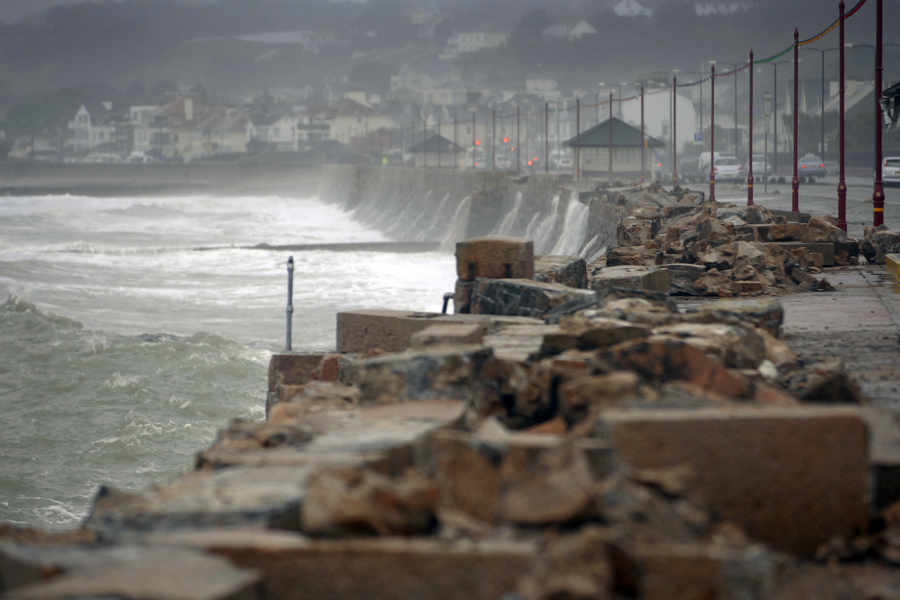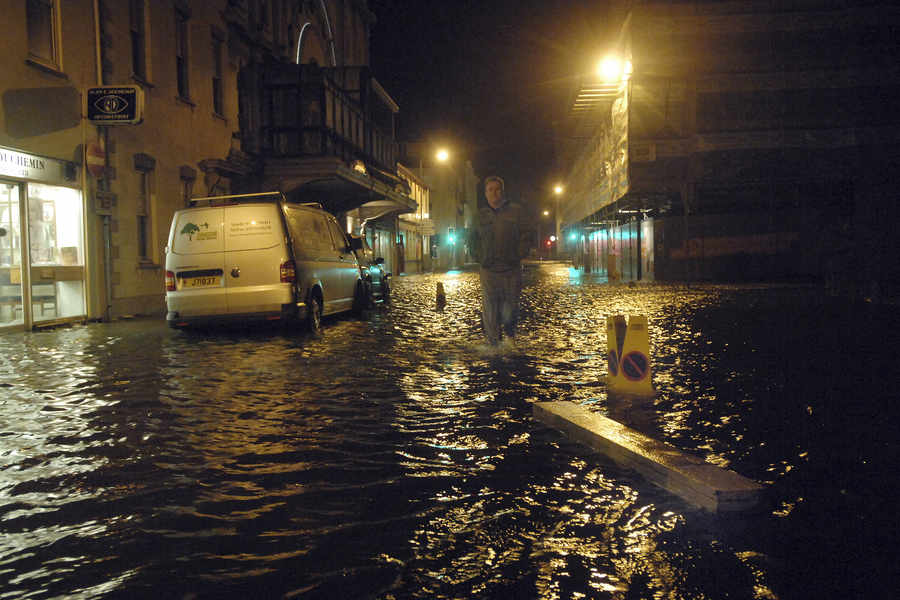- Anti-flood defences needed to protect waterfront developments such as the proposed International Finance Centre
- Without them, Island could lose reputation as a ‘reliable offshore business centre’
- Remember the flood of 2008? See pictures and videos below
- Should more States money be invested in anti-flood defences? Take part in our poll
JERSEY could lose its reputation as a reliable offshore business centre unless anti-flood defences are built to protect waterfront developments such as the proposed Jersey International Finance Centre, an environmentalist has warned.
Delegates from the Environment Department, Town and Country Planning Association and the University of Manchester met at a Town Hall seminar yesterday to discuss how Jersey can protect itself from the effects of climate change.

Keep up to date with the latest weather forecast here
And the TCPA’s head of policy, Dr Hugh Ellis, warned that areas of Jersey which are key to its economy, including the Harbour and St Helier’s waterfront developments, face an increasing threat of severe flooding caused by storm surges.
‘It is absolutely vital that new developments consider the impact of climate change if people are going to invest in them with confidence,’ said Dr Ellis.
During a presentation, the Jersey Met Office warned that the flood of 2008 – during which sections of the sea wall along St Aubin’s Bay were destroyed and areas of town flooded – would have been much worse if the main storm surge had happened at high tide.
Dr Ellis added: ‘The risk is here now and it’s going to increase.
‘When you think of the damage that was done that night and you add another metre of height to the water then you have the worst-case scenario.’
Dr Ellis pointed out that other island-based finance centres have had their infrastructure damaged by extreme weather, such as when Hurricane Ivan sent an eight-foot storm surge crashing into the coastal areas of Grand Cayman in 2004.
‘Other offshore jurisdictions have been hit very hard by flooding, which has damaged their reputation and economies, so if Jersey makes a name for itself as a highly resilient place by building defences then that would be to its advantage,’ he said.
‘It could be very positive for Jersey to build the message that it is resilient to storm surges and a good, resilient place to do business.
‘On the other hand, if there is a storm and floods take out some of the finance industry infrastructure then the reverse happens – you get known for not being resilient.
‘The areas to protect in Jersey are St Helier, which has all the economic assets in terms of the finance industry, and the Harbour, which is a critical asset.’
A report produced for the seminar showed that last year was the warmest on record in Jersey and Dr Ellis pointed out that temperatures are expected to continue rising, increasing the likelihood of more storm surges and higher sea levels.
He added: ‘It takes time to build flood defences – the Island needs to deal with this right now to make itself resilient.’
Environment Minister Steve Luce, who attended the seminar, said that the Island faces a ‘growing challenge from the impact of climate change’ and in particular extreme weather events.
He added that the Environment Department were looking at introducing plans for sea defences into the next Island Plan and would be working with businesses and ministers to make Jersey more resilient.

IN March 2008, hundreds of metres of sea wall along Victoria Avenue was smashed to pieces as the Island was battered by storms and raging seas.
Homes and businesses on the south coast were flooded and the then Transport Minister Guy de Faye said that many people believed that it was the worst battering by the weather that the Island had withstood since the Great Storm of 1987.

Speaking after visiting the scene, the then Minister said: ‘It had to be seen to be believed.
‘Huge two-ton blocks of granite were just pushed inland. A several-hundred-yard section of sea wall was wrecked.’
Roads such as Gloucester Street took on something of the appearance of a river canyon as the sea flooded into town.
Meanwhile, on the first night of the storms, St Aubin and Beaumont were two of the worst affected areas, with up to two feet of water left sitting in several shops, restaurants and houses.







